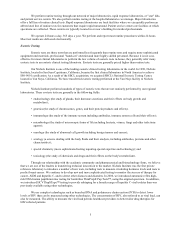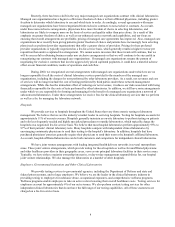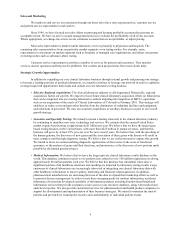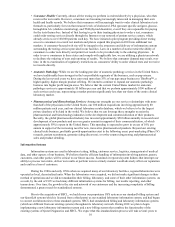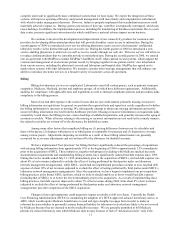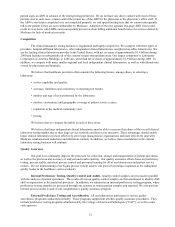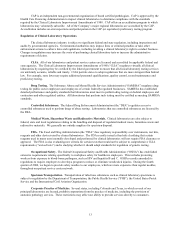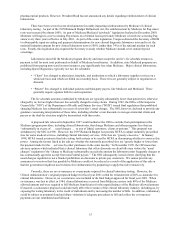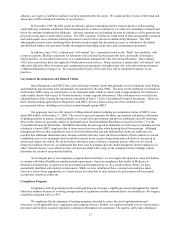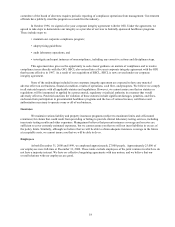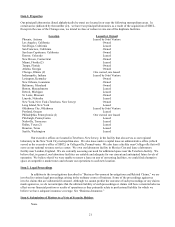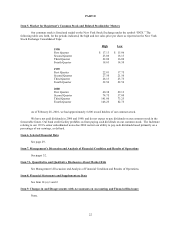Quest Diagnostics 2000 Annual Report Download - page 32
Download and view the complete annual report
Please find page 32 of the 2000 Quest Diagnostics annual report below. You can navigate through the pages in the report by either clicking on the pages listed below, or by using the keyword search tool below to find specific information within the annual report.12
patient signs an ABN in advance of the testing being performed. We do not have any direct contact with most of these
patients and, in such cases, cannot control the proper use of the ABN by the physician or the physician’s office staff. If
the ABN is not timely completed or is not completed properly, we end up performing tests that we cannot subsequently
bill to the patient if they are not reimbursable by Medicare. Adoption of the new separate two-page ABN form could
result in even fewer valid ABNs and consequently prevent us from billing additional beneficiaries for services denied by
Medicare for lack of medical necessity.
Competition
The clinical laboratory testing business is fragmented and highly competitive. We compete with three types of
providers: hospital-affiliated laboratories, other independent clinical laboratories, and physician-office laboratories. We
are the leading clinical laboratory provider in the United States, with net revenues of approximately $3.4 billion during
2000 and facilities in substantially all of the country's major metropolitan areas. Our largest competitor is Laboratory
Corporation of America Holdings, or LabCorp, which had net revenues of approximately $1.9 billion during 2000. In
addition, we compete with many smaller regional and local independent clinical laboratories, as well as with laboratories
owned by physicians and hospitals.
We believe that healthcare providers often consider the following factors, among others, in selecting a
laboratory:
• service capability and quality;
• accuracy, timeliness and consistency in reporting test results;
• number and type of tests performed by the laboratory;
• number, convenience and geographic coverage of patient service centers;
• reputation in the medical community; and
• pricing.
We believe that we compete favorably in each of these areas.
We believe that large independent clinical laboratories may be able to increase their share of the overall clinical
laboratory testing market due to their large service networks and lower cost structures. These advantages should enable
larger clinical laboratories to more effectively serve large managed care organizations and more effectively deal with
Medicare reimbursement reductions and utilization controls. In addition, we believe that consolidation in the clinical
laboratory testing business will continue.
Quality Assurance
Our goal is to continually improve the processes for collection, storage and transportation of patient specimens,
as well as the precision and accuracy of analysis and result reporting. Our quality assurance efforts focus on proficiency
testing, process audits, statistical process control and personnel training for all of our laboratories and patient service
centers. We are implementing a Six Sigma process to help achieve our goal of becoming recognized as the undisputed
quality leader in the healthcare services industry.
Internal Proficiency Testing, Quality Control and Audits. Quality control samples are processed in parallel
with the analysis of patient specimens. The results of tests on quality control samples are then monitored to identify drift,
shift or imprecision in the analytical processes. In addition, we administer an internal proficiency testing program, where
proficiency testing samples are processed through our systems as routine patient samples and reported. We also perform
internal process audits as part of our comprehensive quality assurance program.
External Proficiency Testing and Accreditation. All our laboratories participate in various quality
surveillance programs conducted externally. These programs supplement all other quality assurance procedures. They
include proficiency testing programs administered by the College of American Pathologists (“CAP”), as well as some
state agencies.





